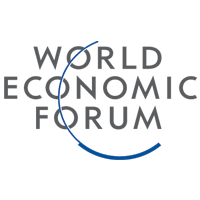World Economic Forum Publishes Playbook for Developing Cyber Resiliency Through Public/Private Collaboration
The World Economic Forum (WEF) has released a playbook for public-private collaboration to improve cyber resiliency ahead of the launch of a new Global Centre for Cybersecurity at the Annual Meeting 2018 taking place on January 23-26 in Davos, Switzerland.
The background to the WEF playbook is the complexity and sometimes conflicting requirements for governments to provide physical and cyber security for their citizens without unnecessarily intruding on personal privacy, and without damaging legitimate multinational businesses. Success, it claims, “depends on collaboration between the public and private sectors.”
 There are two sections to the playbook: a reference architecture for public-private collaboration, and cyber policy models. There is no attempt to provide a global norm in this process, nor a methodology for implementing individual policy models. It is an intra-country model, and implementation will depend upon each nation’s unique values.
There are two sections to the playbook: a reference architecture for public-private collaboration, and cyber policy models. There is no attempt to provide a global norm in this process, nor a methodology for implementing individual policy models. It is an intra-country model, and implementation will depend upon each nation’s unique values.
Fourteen separate policy topics are included, ranging from research and data sharing, through attribution, encryption, and active defense to cyber-insurance. Five key themes cross these topics: a clearly defined safe harbor for data sharing; legal clarity for the work of white hat researchers; the impact of a symmetrical international policy response; the cost and effect of compliance requirements; and software coding quality standards.
Each policy topic is then analyzed in relation to five areas: security, privacy, economic value, accountability and fairness. It is important at this point to note that the playbooks are designed for governments to develop public/private co-operation — civil society issues are not seriously discussed.
For example, the first policy model deals with potential government approaches to zero-day vulnerabilities. The life-cycle of a zero-day comprises unknown existence in code; discovery; and exploitation and mitigation. While secure coding practices can limit the occurrence of zero-days, they “will continue to exist due to human error and other factors.” Therefore, there needs to be a government policy towards zero-days.
The two primary options are for governments to “completely exit the zero-day market and avoid research dedicated to finding software vulnerabilities;” or to stockpile for own use, and/or disclose to vendors. The implications of the latter option are then discussed. Stockpiling without disclosure increases the likelihood that bad actors might also independently discover the vulnerability. Purchasing zero-days weakens the bug bounty programs since researchers are likely to sell to the highest bidder — which is likely to be government.
The effect of a zero-day policy is then related to the five security areas. Increased exploitation of zero-days will hurt commerce (economy) and result in more breaches (privacy). Increased research and more sharing will be beneficial (security); while the sharing of zero-days applies pressure on vendors to more rapidly mitigate the vulnerabilities (accountability). Fairness is not implicated in the different policy choices
This basic model of analyzing the policy topic, and then discussing the trade-offs with each of the five security areas (and their interaction) is applied to each of the 14 discussed policy topics. For example, ‘active defense’ is first defined to range from “technical interactions between a defender and an attacker” to “reciprocally inflicting damage on an alleged adversary”.
One obvious danger is the potential for retaliatory escalation. “Responding to a nation-state adversary may trigger significant collateral obligations for a host state of would-be active defenders,” warns the playbook. “As such, policy-makers may consider curtailing attempts to attack nation-states. Policy-makers might also consider curtailing the use of active defence techniques against more sophisticated non-state adversaries, as those adversaries may have a greater ability to obfuscate their identity and dangerously escalate a conflict.”
The trade-offs on an active defense policy are then related to the five security areas. Expansive use of active defense will increase costs without necessarily having an economic return (economy). It would diminish privacy for both the alleged adversary and for any third-party collateral damage organizations (privacy). Any actual effect on overall security will likely depend upon its effectiveness as a deterrent (security). Only larger companies, and especially nation-backed industries such as the defense sector will likely have the means to employ active defense (fairness); but it is only a realistic option with more accurate attribution (accountability).
The intention of the playbook is simple, despite the thoroughness and complexity of its content. “The frameworks and discussions outlined in this document,” it concludes, “endeavour to provide the basis for fruitful collaboration between the public and private sectors in securing shared digital spaces.”
“We need to recognize cybersecurity as a public good and move beyond the polarizing rhetoric of the current security debate. Only through collective action can we hope to meet the global challenge of cybersecurity,” said Daniel Dobrygowski, Project Lead for Cyber Resilience at the World Economic Forum.
While public/private dialog on security will of necessity be led by individual governments, the document provides an excellent overview of many of the security issues faced by commercial security teams. Although it contains no technical detail on security problems, it provides a detailed picture of the different implications from different approaches to the main security issues faced by all companies today.
Related: White House Cyber Chief Provides Transparency Into Zero-Day Disclosure
Related: China May Delay Vulnerability Disclosures For Use in Attacks
Related: Fighting Back Against the Cyber Mafia
Related: The Increasing Effect of Geopolitics on Cybersecurity












